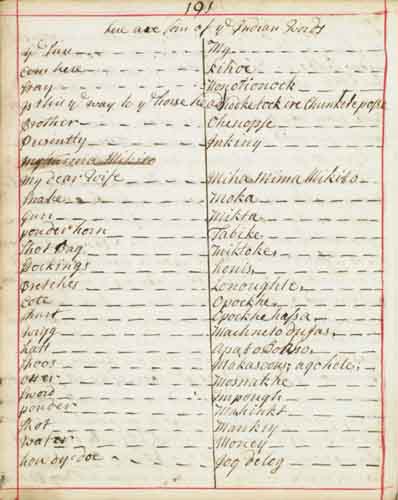Sale 1988 - Lot 421
Price Realized: $ 36,000
Price Realized: $ 41,400
?Final Price Realized includes Buyer’s Premium added to Hammer Price
Estimate: $ 10,000 - $ 15,000
LOST JOURNAL OF JOHN FONTAINE (VIRGINIA.) Fontaine, John. Manuscript journal detailing a voyage to Virginia and a 5 year stay, including descriptions of Indians and the only contemporary account of the Spotswood Expedition to the Shenandoah Valley. Approximately 184 leaves, mostly written on one side only. Large 8vo, contemporary vellum, very soiled, needs rebinding; interior generally clean. signed by fontaine on the front pastedown. With a copy of A Tale of the Huguenots (New York, 1838), inscribed by Ann Maury to John Fontaine and a 19th century transcription of James Fontaine's (John Fontaine's father) manuscript autobiography and history of the family. Np, 1713-19 [but circa 1720?]
Additional Details
A well-known account, the actual whereabouts of Fontaine's journal have been unknown since 1914 where it was listed in the inventory of an estate. Several printed editions of the journal exist: the first in 1838 by J. S. Taylor under the title A Tale of the Huguenots, another more complete version in 1853 by Fontaine's descendant Ann Maury under the title Memoirs of a Huguenot Family, and more recently in 1972 edited by Edward Porter Alexander and published by Colonial Williamsburg, based on a 19th-Century transcript of the journal made by Ann Maury.
The journal is roughly divided into eight sections in which there are almost daily entries, though with gaps between the sections. The Journal begins with entries during Fontaine's military service in Spain from 31 August to 7 July 1713. The next section is an account of a failed voyage to Virginia, in which the ship was forced to turn back due to ill weather. This section contains numerous fervent prayers to God for salvation and in the midst of the storm on 29 December 1714 the ship is forced to cut its mast. On 28 February 1714/15 Fontaine embarks again for Virginia, arriving on 27 May 1715, where he describes the Chesapeake Bay as "the finest rivers that ever I was in, and all the borders of the rivers covered with noble trees." Fontaine eventually arrives at Williamsburg on 6 June 1715.
While in America, Fontaine makes four expeditions: to Germanna, to Fort Christanna, the Spotswood Expedition and to New York. He leaves for Germanna on 9 November 1715, and on the journey describes a canoe, the nest of a muskrat, and what is presumably his first encounter with Indians, in which he describes an Indian lodge and the scantily-clad Indian women. The expedition to Fort Christanna contains the best descriptions of Indians in the Journal. On 13 April 1716 Fontaine leaves for Fort Christanna with Governor Spotswood arriving the next day, when Fontaine writes, "fifty of the young men with feathers in their hair and run through their ears and their faces painted with blue and vermilion and their hair cut in many forms . . . They dress themselves after this manner when they go to war . . . These young men made no speeches, only walked up and down and seemed to be very proud of their most abominable dress." Following this commentary is a listing of 45 Indian words and phrases with their corresponding English translations.
The most significant of Fontaine's trips is his journey over the Blue Ridge mountains on the Spotswood Expedition from August to September 1716, the second Western account of the Shenandoah Valley (preceded by Lederer). In a now famous passage, when the party reached the summit of the mountains on 6 September 1716 and looked into the Shenandoah Valley, they drank numerous toasts to the King's health, the Prince's health, to the Royal Family, to the Governor, etc., each toast with a new liquor. Fontaine's trip to New York is largely uneventful, though contains interesting descriptions of the city and its Huguenot population. But on his return trip he is waylaid by ruffians and is forced to fight them off. In June of 1719 Fontaine leaves Virginia to return to England. The journal ends with extracts from early 18th-century histories of Spain and Portugal.
Not having examined the actual journal, Alexander writes in the Introduction to the 1972 edition, that based on Ann Maury's transcript the "internal evidence . . . shows that Fontaine made daily entries during his trips, though he occassionally may have written them several days later, and it is conceivable that he made a finished copy of the whole Journal after his return to Dublin." It is unclear but seems likely that this journal is the contemporary finished copy. Besides the general uniformity of the hand-writing, there are several entries out of chronological order, suggesting that in recopying the original journal Fontaine lost his place.Concluding the introduction to the 1972 edition of the Journal, Alexander writes, "The historian could wish, of course, that Fontaine wrote more introspectively and with more humor. Still, the Journal is a most important and useful first-hand account -- a matter-of-fact and yet very human document of considerable general interest and especially valuable for the light it throws on early Virginia history."

Exhibition Hours
Exhibition Hours
Aliquam vulputate ornare congue. Vestibulum maximus, libero in placerat faucibus, risus nisl molestie massa, ut maximus metus lectus vel lorem.


